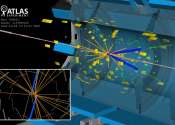Electron collider on a chip verified by three independent research teams
Quantum electronics promises significant advances in ultra-sensitive measurements and quantum information processing. In nanoelectronic circuits, one electron can be used to precisely modify the trajectory of another electron ...








